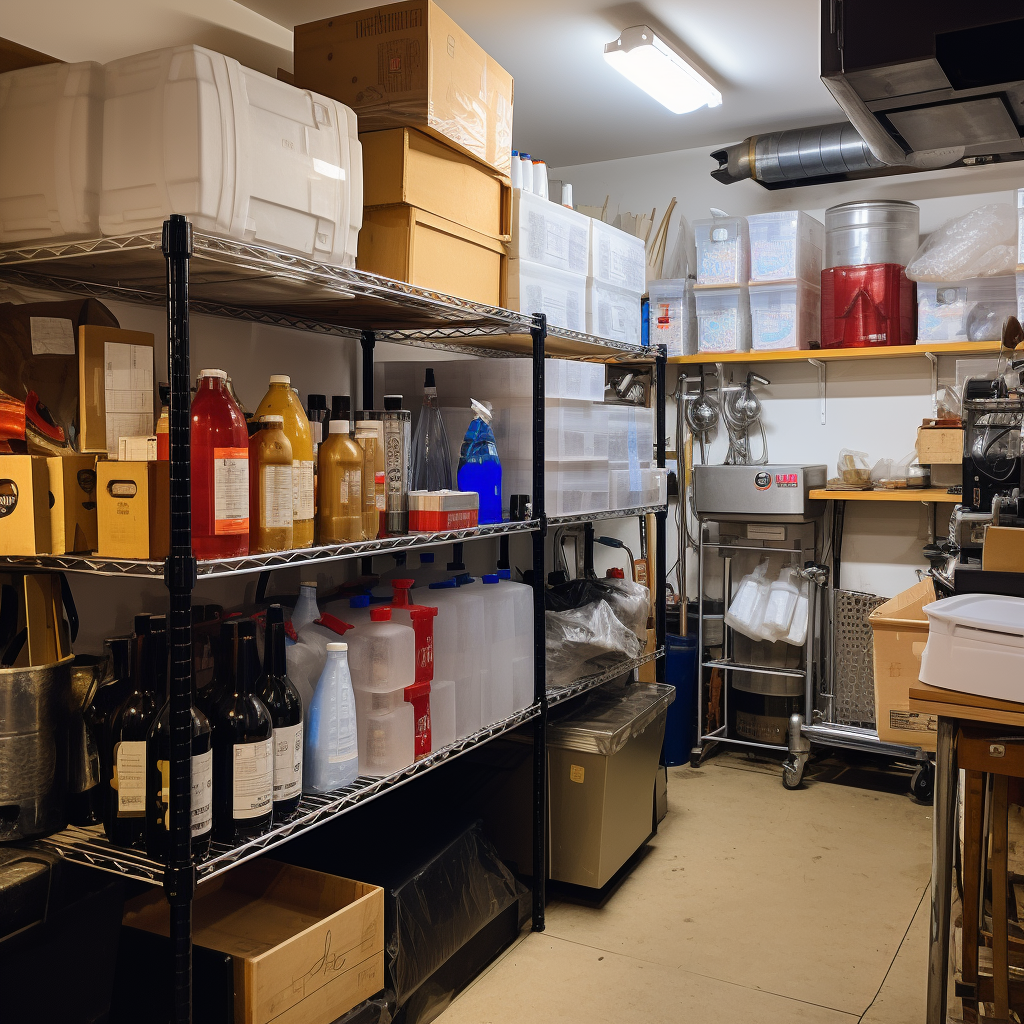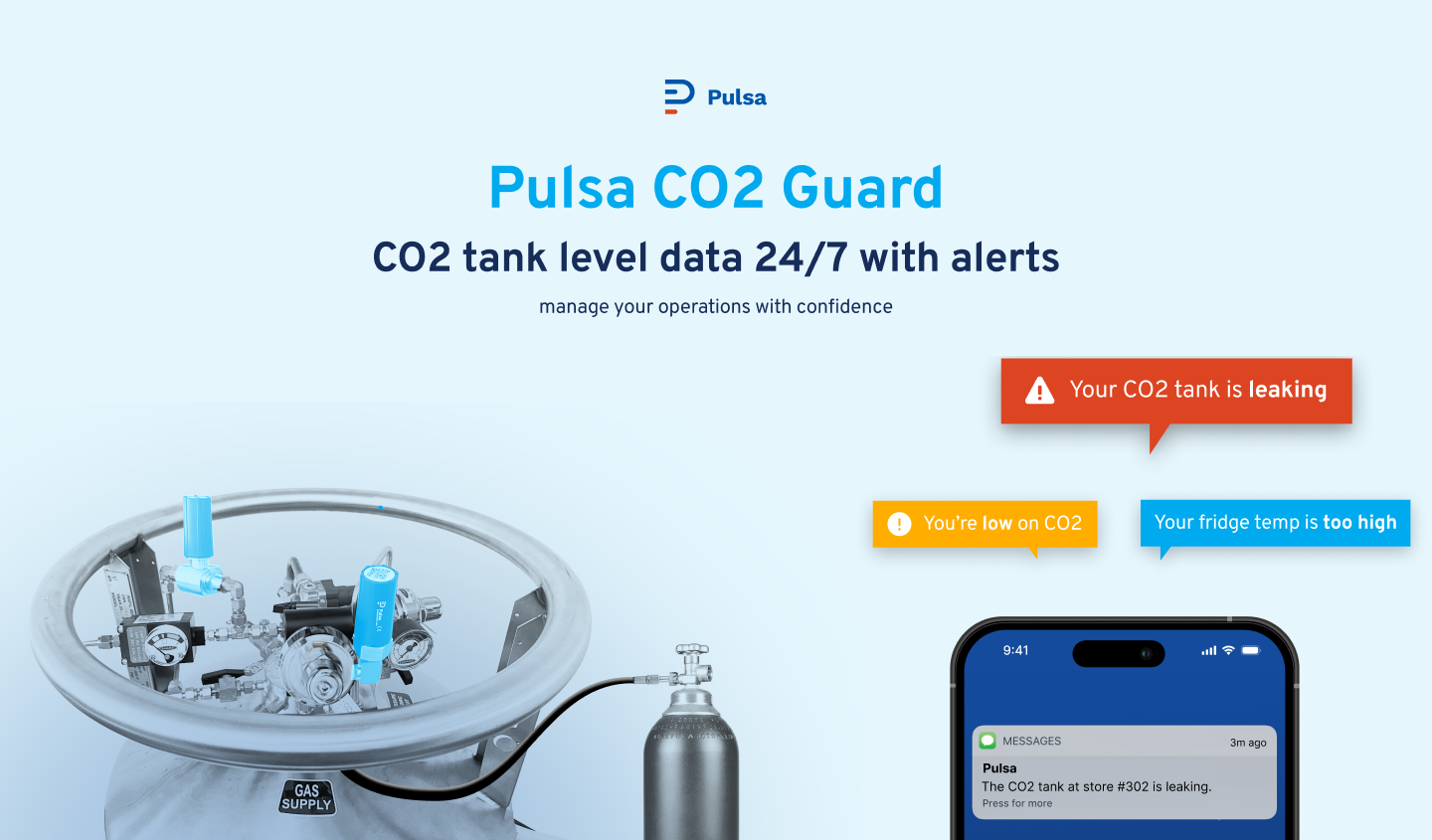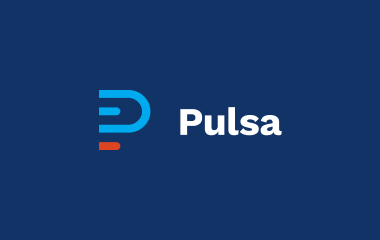INSIGHTS
Getting More Out Of Pulsa

- Insights
- Is Your Restaurant Prepared For A CO2 Shortage? 5 Must-Do Inventory Tips
- 5 min read
Is Your Restaurant Prepared For A CO2 Shortage? 5 Must-Do Inventory Tips
CO2 shortages are a persistent challenge affecting businesses worldwide, but especially within the hospitality industry. This resource is at the heart of daily operations for many restaurants and bars, from carbonating drinks to preserving food quality. With supply chain disruptions, plant shutdowns, and fluctuating gas prices contributing to the problem, restaurants that are not prepared risk operational chaos and unhappy customers.
The current CO2 shortage highlights the vulnerabilities in traditional supply methods, particularly for the hospitality industry. The cause of the shortage is multifaceted; some of it was due to increase in demand and some of it stems from supply chain issues combined with reduced ethanol production that occurred back in 2020 as a result of the COVID-19 Pandemic.[1] This highlights just how intense delayed repercussions can be from events that go back several years.
Knowing that there’s a CO2 shortage worldwide is one thing, but knowing that it could occur within your very own business is another. Relying on gas distributors or outdated gauges leaves restaurants exposed to errors. These delays can spell disaster during peak business hours. Managing CO2 inventory involves making sure your business can operate smoothly despite industry-wide shortages.
Understanding the CO2 Shortage in Hospitality
Traditionally, most of the CO2 used in the market comes as a byproduct of ethanol and ammonia production or oil refining. When these industries experience shutdowns, like the maintenance-related closure of the Hopewell plant in Virginia, the effects hit restaurants hard. The hospitality sector bears the brunt, with food and beverage producers struggling to meet demand due to erratic supply and inflated prices.
Restaurants rely on CO2 for much more than carbonation. CO2 also keeps refrigeration systems stable and maintains the quality of certain food items. When disruptions happen, the consequences go beyond flat sodas. Spoiled goods, interrupted service, and lost revenue are just the tip of the iceberg. Managing CO2 inventory effectively has become a key part of modern restaurant operations.
How to Manage a CO2 Shortage: 5 Inventory Tips
A proactive approach to CO2 inventory management can mean the difference between business as usual and costly interruptions. Here are five actionable tips to help restaurants tackle these challenging times.
- Switch to Smart Telemetry for Accurate Monitoring
Traditional analog gauges are often found on CO2 tanks. They were not designed to handle the demands of modern restaurants. These gauges are prone to inaccuracies, with acceptable errors ranging from 10-15%.
This margin might seem small. Yet, even minor miscalculations can lead to severe consequences in a high-stakes environment like a busy restaurant.
Additionally, analog gauges cannot provide actionable data. They don’t offer insights into consumption trends or detect anomalies like leaks. Without these capabilities, restaurants are left guessing. They must often rely on distributors to fill gaps in knowledge—an approach that leaves too much room for error.
- Real-Time Monitoring
Switching to smart telemetry systems means you can simply add a sensor to your CO2 tanks, like the Pulsa pressure sensor, which provides real-time tank measurements every three minutes. This frequent data collection lets you know exactly how much CO2 is left in your tank. Instead of scrambling to react when your supply runs out, you can take control by planning. Real-time monitoring allows you to adjust your operations proactively.
These systems also enable you to access your data remotely. If you're in the kitchen, at home, or managing multiple locations, you can monitor your CO2 inventory through an app or web dashboard. This level of accessibility makes sure you’re always in the know, no matter where you are.
- Track Usage Patterns to Prevent Waste
Customer traffic, promotions, and the time of year directly influence CO2 usage. Events like sports championships, holidays, or local festivals can cause sharp spikes in demand. Without precise tracking, these fluctuations can lead to inefficiencies like overstocking or understocking.
Overstocking results in wasted resources and higher costs. Meanwhile, understocking can result in a CO2 shortage that disrupts service during business hours. Accurate tracking helps you strike a balance to align your inventory with actual demand while minimizing waste.
- Adapting to Seasonal Variations
Seasonal changes in customer behavior can significantly impact CO2 usage. Warmer months may drive higher demand for carbonated beverages, while colder months reduce consumption. Tracking these seasonal trends lets you prepare for shifts in usage without overcommitting resources during slower periods.
- Spotting and Addressing Inefficiencies
Usage tracking is about identifying inefficiencies. Smart telemetry systems can flag unusual patterns that might indicate equipment issues, leaks, or excessive consumption in specific areas.
For example, a consistent rise in usage during non-peak hours could signal a leak in your CO2 system. Addressing such issues promptly prevents further waste and ensures your supply lasts longer.
- Detect and Address Leaks Immediately
CO2 leaks are a costly drain on your resources and operations. Each unnoticed leak results in wasted gas, increased refill costs, and the potential for emergency supply shortages. Even small leaks can accumulate into significant financial losses over time. Whether you’re running a major hotel or a small, family-owned-and-operated restaurant, these costs add up. Moreover, an unnoticed leak could disrupt services during peak hours.
Traditional monitoring of CO2 levels, such as analog gauges, often fails to detect leaks in real-time. When you realize an issue, you’ve already lost a significant volume of CO2.
- Real-Time Monitoring for Immediate Action
Smart telemetry systems, such as the Pulsa Platform, change the way leaks are detected. These systems provide real-time monitoring, taking readings every three minutes and identifying even the slightest changes in tank levels.
When the system detects an unusual drop, it flags the anomaly immediately. This allows you to investigate and resolve the issue before it escalates. Real-time monitoring prevents unnecessary losses and helps maintain smooth operations.
- The Importance of Data Centralization
Managing multiple CO2 tanks or locations can complicate leak detection, especially if you rely on outdated or fragmented systems. The Pulsa Gateway solves this problem by centralizing data from all connected sensors. With a single, easy-to-use dashboard, you can monitor every tank across your operation, regardless of location.
Centralized data allows you to spot patterns and anomalies more effectively. For instance, if one tank consistently shows a higher depletion rate than others, it might indicate a persistent leak. Consolidating your monitoring efforts helps you identify and address issues faster.
- Build Flexibility into Your Supply Chain
Anyone in hospitality knows that relying solely on a single distributor or traditional supply methods leaves you vulnerable to disruptions. Diversifying your sources and investing in technology accommodating different CO2 supply options can help.
Pulsa’s systems allow you to manage tanks from various suppliers, giving you more control over your inventory. This adaptability allows you to maintain operations even when one source faces delays or limitations.
- Use Predictive Analytics for Smarter Reordering
Predictive analytics can help you anticipate your CO2 needs with remarkable accuracy. You can reorder supplies at the right time and avoid last-minute scrambles. Analytics lets you achieve this by analyzing past consumption trends and factoring in upcoming events or promotions
For instance, if your system detects a higher-than-usual consumption rate, it can recommend stocking earlier than usual. With tools like the Pulsa Dashboard, you can forecast depletion rates and make proactive decisions that keep your operations on track.
The Cost of Ignoring CO2 Inventory Management
Ignoring CO2 inventory management is a risk restaurants can’t afford to take. Running out of CO2 means more than just flat drinks. It disrupts the customer experience, halts operations, and damages your reputation. With shortages becoming more frequent and severe, the costs of inaction are higher than ever.
Beyond the immediate financial losses, poor inventory management can lead to long-term inefficiencies beyond immediate financial losses. Over-servicing from distributors or underfilled tanks can eat into your margins. Taking control of your CO2 supply with innovative technology reduces these risks, saving time, money, and stress.
Why Pulsa is the Reliable Choice During a CO2 Shortage
At Pulsa, our innovative telemetry systems give you full control over your inventory, helping you stay ahead in the market. The Pulsa Platform provides real-time insights, predictive analytics, and integration for total inventory visibility.
So why Pulsa? Because it lets you take the stress out of CO2 management. From tracking tank levels to detecting leaks, our systems support you to make smarter decisions that keep your business running smoothly. Don’t let a CO2 shortage disrupt your operations—trust Pulsa to help you stay prepared.
[1] https://www.foodlogistics.com/transportation/cold-chain/article/22618121/university-of-tennessee-knoxvilles-haslam-college-of-business-whats-causing-the-co2-shortage-and-how-to-remedy-it#:~:text=Aside%20from%20having%20visibility%E2%80%94knowing,beverage%20companies%20have%20indeed%20done).

-1.png)


